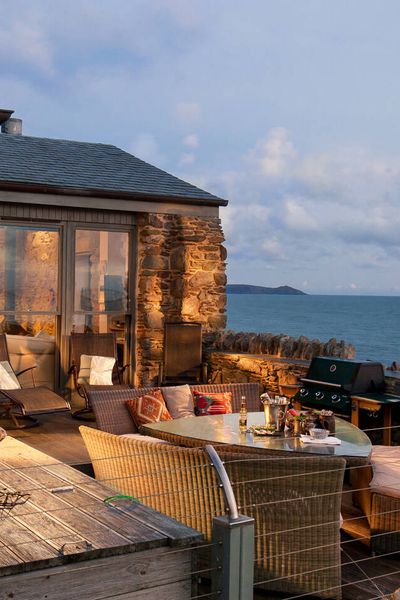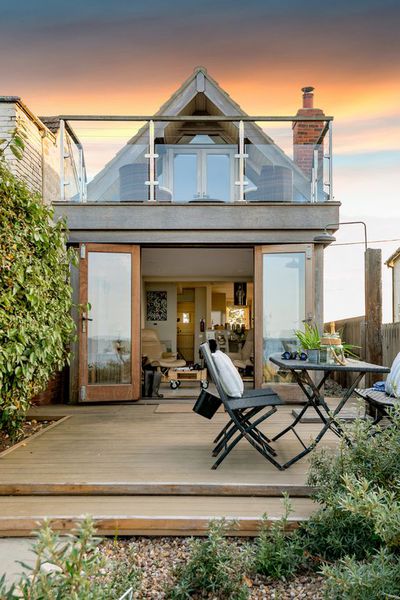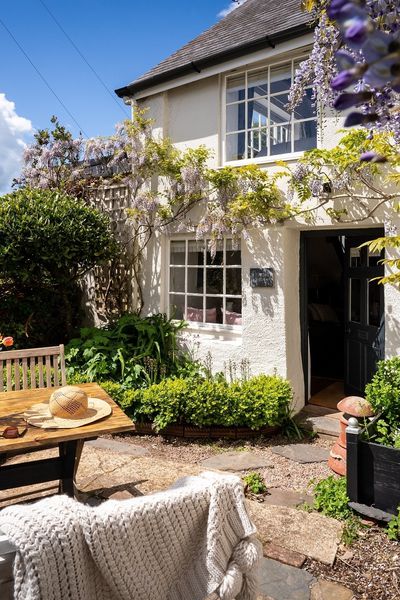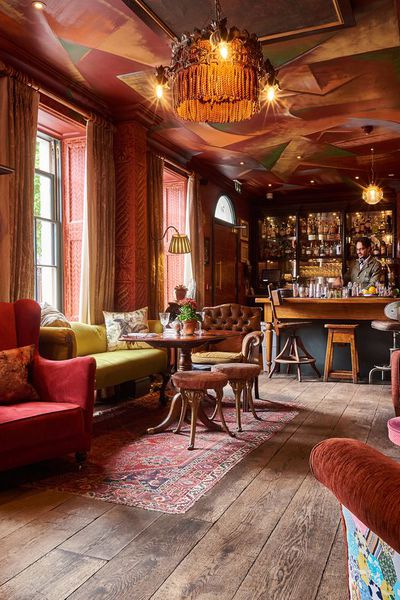
Championing the joy of travelling by yourself – and advice for anyone thinking about giving it a try
5 min read
Sarah Baxter, talks about the highs and lows of travelling solo, from loneliness on the icy Finnish tundra to convivial meals in Parisian apartments.
I was sitting, minding my own business, in a corner of the Plough Inn. But the locals were having none of it. Barely a sip into my wine, I’d been entreated to join the crowd by the wood-burning stove. And my quick drink to fill the gap before bedtime turned into a long, convivial evening, discussing everything from what on earth I was doing in the little village of Little London to the pub itself (at least 400 years old), via house prices in rural Hampshire, the Duchess of York and other boozers in the area I might like to visit.
I think fondly of the Plough. It was one of the highlights of my solo walk along the St James’ Way, an English camino from Reading to Southampton; Little London gave me a warm pilgrim’s welcome. But would I have been welcomed as fulsomely if I hadn’t been on my own?


Power and possibility
I often travel solo. I’m married, with a husband who also loves to explore. And we do love to explore together. But I also relish trips alone. Solo travel is not just for singles, after all. There’s a liberation in travelling this way, and a greater openness to serendipity.
It can also be empowering. My husband is excellent at planning, so I can be guilty of letting him take the lead. On the plus side, this allows me to relax. But it also means I think less for myself. When I’m on my own, I’m forced to step up to the plate. There’s no one to follow, no one with whom to confer. If I want something to happen, I have to make it so. I must map the walk, buy the supplies, read the timetable, find the hotel. It also means I can get up when I like, move on when I want, decide on which museum to visit – or decide on no museum at all. No compromising required. This creates a special thrill, the kid-in-a-candy-shop tingle, all too easy to lose as an adult, that comes from realising you’re master of your own adventure.
That’s not to say there aren’t downsides. Transport delays are more bearable in company. Pinch-me moments can be more moving when shared. You need to learn to love eating alone. It’s really handy to have someone to watch your bag while you run to the loo. And when things go wrong, you’ve no choice but to work out a solution for yourself.
But solo travel isn’t something to fear. Someone asked me once, what are the best ways to cope, travelling in a strange place where you know no one at all? I say: reframe that worry. You’re in a new place, and no one knows you – you can do anything you like. And those people you don’t know? They could be friends in waiting. Rather than feeling panic, feel the possibility.


Alone, not lonely
Solo travel doesn’t mean the same thing to all people. You might be travelling alone in the hope of meeting others along the way – in which case you need to leave yourself open to invitations and opportunities. Or you might be travelling alone for exactly that: to be alone. To escape the rest of the world and revel in your own company for a while. There’s a huge difference between solitude that is enforced and that which is chosen. Purposefully carving out time and space for self-exploration can be hugely beneficial to your mental health.
Perhaps best are the solo trips where you dip in and out. Where you have moments of ‘me’ balanced with moments embracing your fellow humans. I once walked parts of the Portuguese Coastal Camino, a much quieter route to Santiago de Compostela than the Camino Frances. There were hours of strolling alone along windy beaches, stopping when I fancied, watching sunsets from seaside hotels rather than dossing down en masse in pilgrim albergues. But I also had times – especially when the coastal route meets Portugal’s more heavily tramped inland trail – chatting to Germans, Americans and Brazilians, sharing coffee with a philosophical Pole, consuming rough red wine and pulpo (octopus) with ebullient Spaniards. Over the years, I’ve learned how to leave a social situation when I want to, and to thrust myself out there when I’ve had enough of being inside my own head. I worry less about initiating a conversation, because you can quickly tell if people want to engage.
I do like to be alone though. I’ve had some wonderful solitary experiences that wouldn’t have felt as special if I’d been part of a group. Moments of utter calm or unexpected euphoria. Times when you realise you’ve gotten to this place on your own wits and wherewithal; that you are capable in your solitude. You realise no one else knows exactly where you are, and the moment is all yours, like a precious gift only you will ever unwrap.
I recall hiking on the Greek island of Andros. It was June, hot and dry; I seemed to be the only mad dog out in the noon-day sun, following old mule tracks up, down and around to cross the island coast to coast. I was a sticky mess when I reached the beach at Paleopolis. This had been the capital of Andros in the seventh century BC but all was quiet now, its ruins loitering in the scrub behind the beach. I had the place to myself. I sat on the shingle, beneath a pine tree, happy-tired from a morning’s walk. I pulled out my picnic: fresh apricots, local cheese, a perfectly boiled egg – two taps on the driftwood, and the shell slid off in one satisfying piece. I ate, and rested, and watched a cormorant come and go; it repeatedly plunged into the waves, inevitably emerging with a silver fish in its bill. As the wild meltemi wind blustered, I felt my worries blow away with it.


Food for thought
Picnics in the wilderness are perfect solo moments. Conversely, dining alone, especially in restaurants packed with mawkish couples, can be one of the most uncomfortable. But there are workarounds.
In Copenhagen, for instance, I went fællesspisning – which is, thankfully, easier to do than pronounce. Meaning ‘communal dining’, this Danish tradition involves big meals eaten around large, shared tables. I tried it at Folkehuset Absalon, in the city’s hip Vesterbro neighbourhood, a deconsecrated church that’s now a community centre dishing up cheap, hearty dinners. On a summer evening I shared moussaka and pineapple cake with two middle-aged ladies from the suburbs, three flatmates and two students – all of whom spoke excellent English. We collected our own crockery and cutlery, and served each other from communal bowls. By the end of the meal I had a full belly, a warm glow and a map scribbled with their suggestions of Copenhagen must-sees.
Other countries have their own equivalents of fællesspisning. Or you might try sites such as eatwith.com, on which you can find local people hosting dinners. In Paris, food capital of the world, I bypassed all the romantic bistros and opted for dinner in Karyn’s apartment instead. It was not only an opportunity to eat with others, but a chance to have a nosy in a real Parisienne’s home – in this case, an artist’s studio in an old foundry, tucked away in the 3rd arrondissement. The (good) wine, oozy cheese and lively conversation flowed.
Of course, you may not want company. And you should feel no embarrassment asking for a table for one – though booking in advance helps dispel awkwardness, and avoids you having to seek an alternative if the place is full. Strike up a conversation with your server – you might get recommendations, and won’t be ignored. Ask for a table around the edges or by the windows, so you don’t feel marooned amid groups and couples; it’s better for people watching too. Sit at the counter for a more relaxed vibe, and potential chats with people either side. Pick a restaurant with live music. Or simply bring a book (though it can be challenging trying to prop pages open with salt shakers and side plates – newspapers and tablets are more convenient).
Alternatively, don’t go to a restaurant at all. Opt for food courts and street stalls, or join a cooking class or tour. A guided brunch-time dumpling trail around Richmond, Vancouver, opened my eyes and stomach to North America’s best Asian eating, and the history that goes with it. I was so full afterwards I didn’t need to worry about having dinner, alone or otherwise.
Three’s a crowd
Other downsides to solo-ing? Safety is a consideration. But, when in a new place, you need to be wise to potential dangers whether you’re alone or not. Instinct is your friend. Be conscious of your surroundings and have safeguards in place: online copies of your documents, some money hidden away.
However, I can count on one hand the times I’ve actually been disappointed to be on my own. Once, at a lodge in Arctic Finland, I joined a trip to seek the northern lights. Every other snowmobile sported a couple, snuggled together against the chill – it was a good 20 degrees below. Driving solo, not only did I miss the warmth of another body, I felt psychologically left out in the cold. When we stopped to watch the aurora paint the inky sky, I had no one to ooo-and-aaah with. Par for the course as a solo – but worse here. Standing amid empty enormity and lovers’ intimacy, I felt conspicuously on my own.
But this, I’ve found, was the exception not the rule. On that same Finnish trip, I also joined some fellow solos for a snowshoe hike, and we happily yomped and jabbered together in the sparkly wilderness. I also spent a night, alone, in a cabin of glass and felt awestruck by my lonely irrelevance, gazing at the universes above.
It simply reinforces the importance of research and location. While solos should feel free to go anywhere, some places are better suited than others. Be wary of anywhere too ‘honeymoon-y’.


Time to go solo
You don’t have to launch head-long into a six-month solo jaunt around the world. If you’re nervous about going it alone, start short and local. Get a feel for things on more familiar ground. If you do head overseas, maybe arrange for a guide or taxi to meet you on arrival, or join a group tour for a while, to ease yourself in. Think about booking smaller, family-run guesthouses, where you’re more likely to form a connection with your host. And always pack light – that way you can be more nimble, and never have to rely on others to help you with your bag.
These are some practicalities, important to heed. But always remember the bigger picture. Solo travel means never going to another museum that doesn’t float your boat. Never waiting for someone to catch up – or hurrying to keep up with someone else. It means early starts if you want, late breakfasts if you prefer; lazy lunches, spontaneous detours, casual friendships; no one to worry about except yourself. It means having the freedom to do as you please.
View all our special places for solo travel >
Want more travel inspiration? Get our email updates direct to your inbox >
Sign up >Share this article:
You might also like
Pasture, pizza and back to the pub: Askham Fell and Lowther Estate walk

Jen & Sim Benson
5 min read
Royal security, mismatched columns and water sounds: The making of a country garden

Ruth Richardson
Sawday's Expert
5 min read
Discover the new generation of B&Bs

Christopher Wilson-Elmes
Sawday's Expert
5 min read












